Our tree canopy is defining characteristic of River Road grounds. Our trees give us shade; feed animals, birds, and insects; absorb our storm water, absorb CO2, and help make our grounds a special place. This week we’ll look at some of our most common trees.
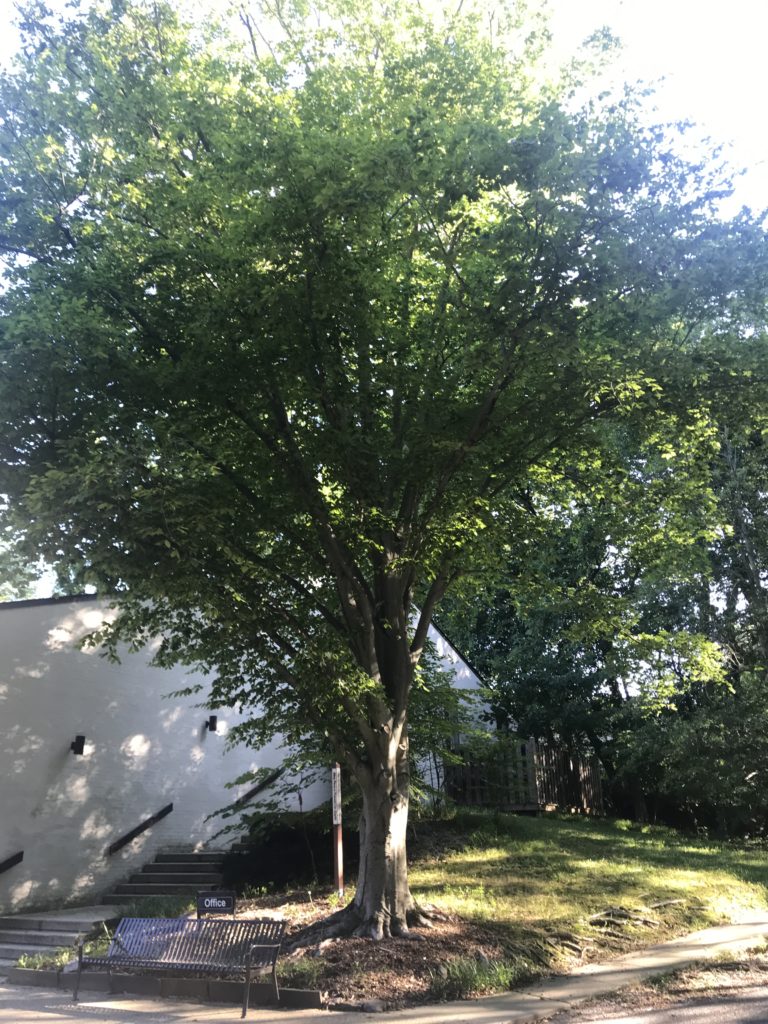
We have many American Beech (Fagus grandifolia) trees, including this specimen by our entrance. Our largest beech (facing Whittier) has a circumference of about 8 feet. The Montgomery County Champion Beech has a circumference of 18 feet.
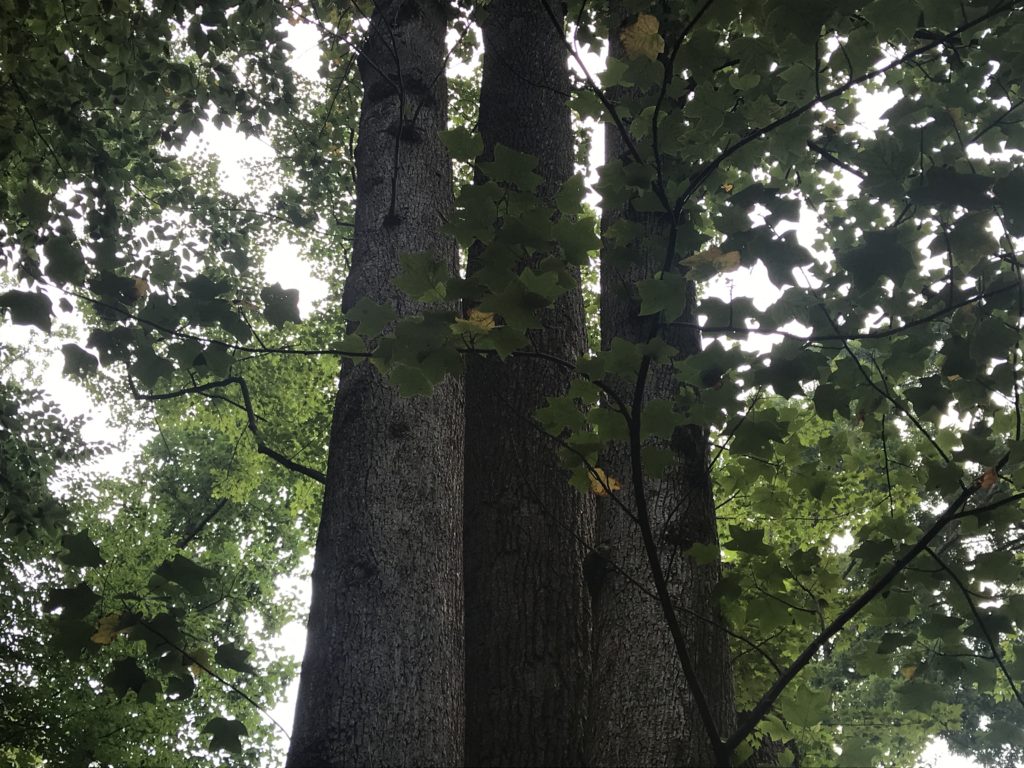
We also have many large Tulip trees (Liriodendron tulipifera), including this one with three trunks near the Worship Circle in the back. The name probably comes from the shape of the leaves and the flower, which looks very much like a tulip.
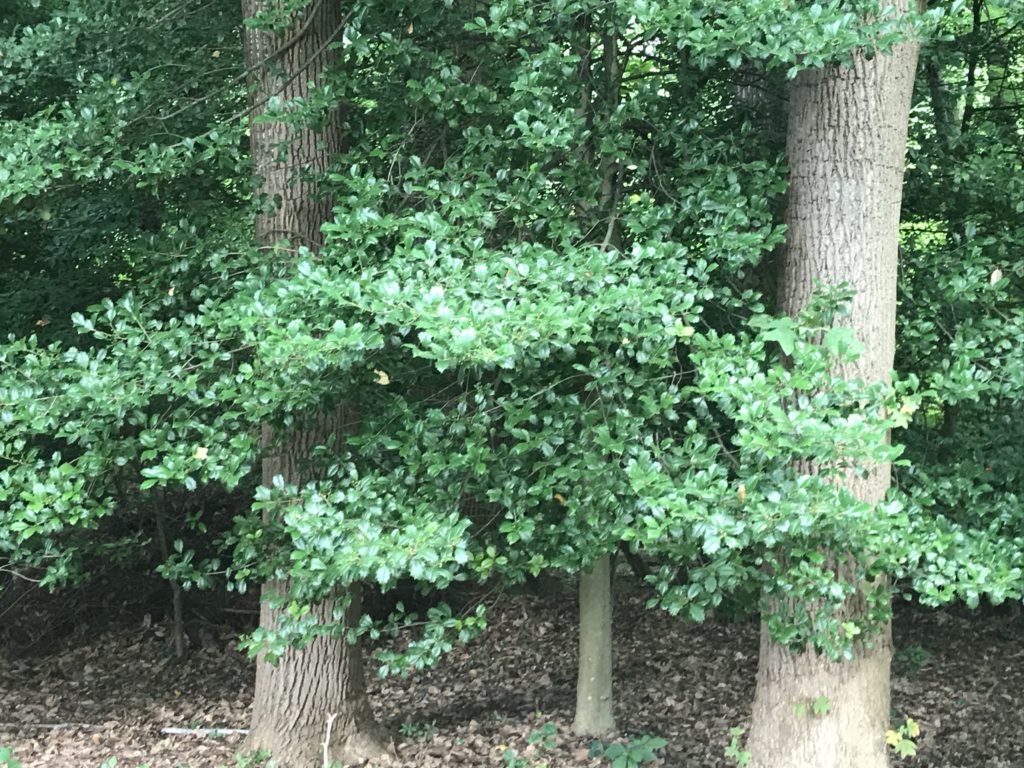
A common understory tree is the American Holly (Ilex opaca) shown here growing below two tulip trees. During late winter, we often get large flocks (100+) of robins descending on our site to eat the holly berries and drink from our springs.
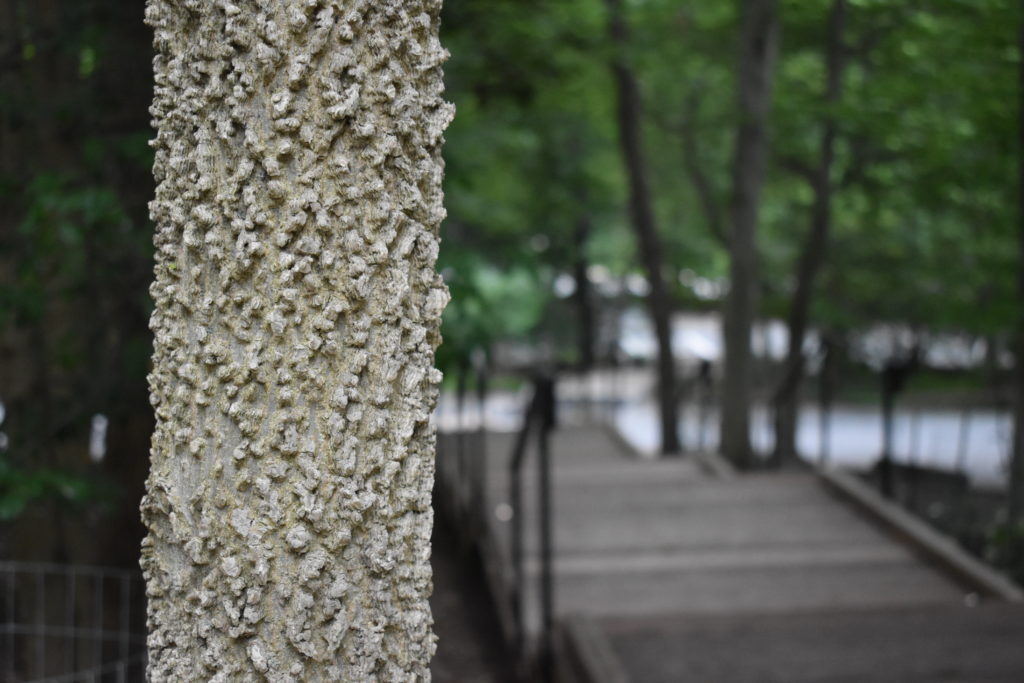
We have multiple Hackberry trees (Celtis occidentalis) in our front, including this specimen beside our new path close to the front of the building. Easily identified by the corky ridges on the bark, these trees (also called Sugarberries) provide valuable winter food for many birds. It is the host plant for many butterfly species, including the Hackberry emperor.
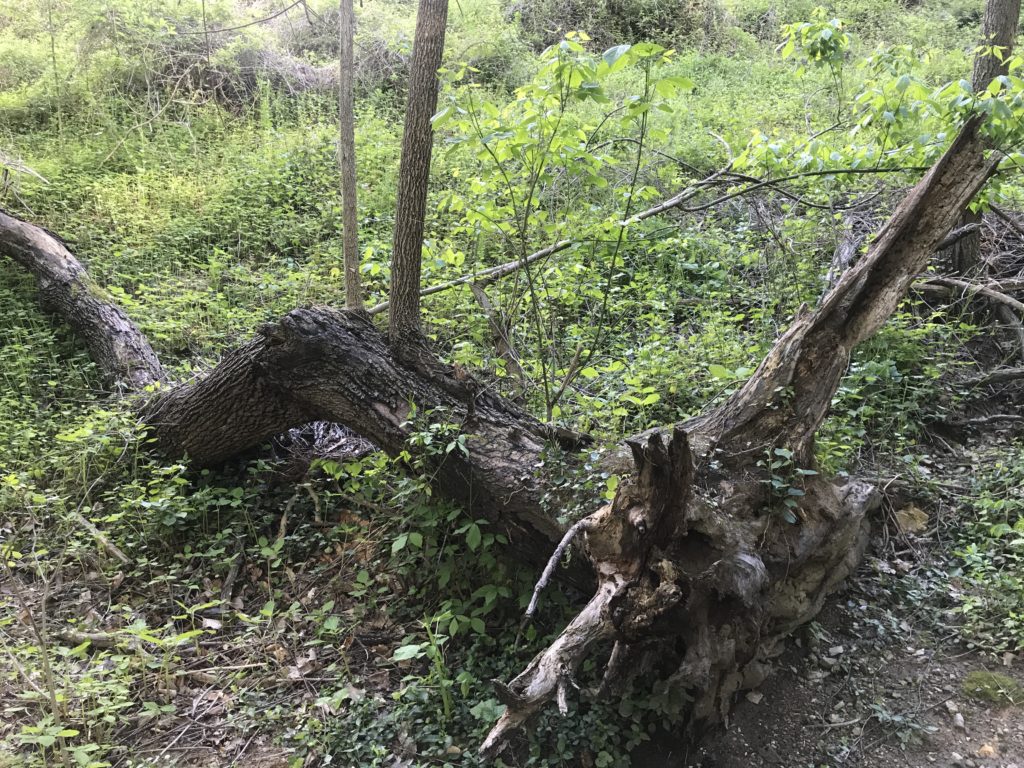
RESILIENCE. I don’t know when this Eastern black walnut (Juglans nigra) below the Worship Circle in the back fell over, but I am amazed at the very healthy trunk that has emerged from the fallen tree.
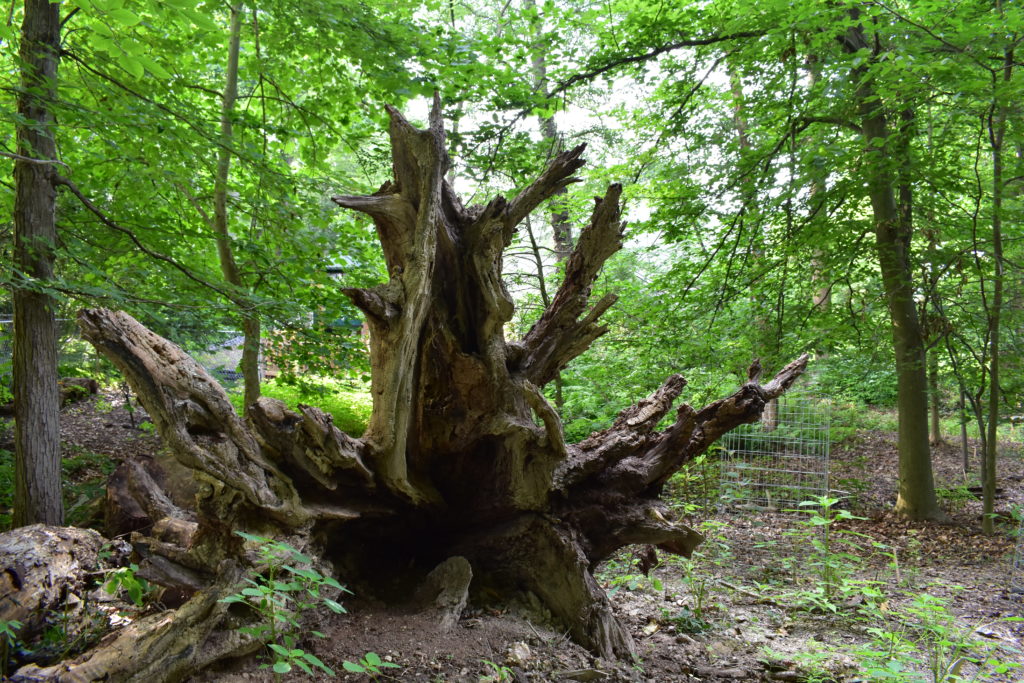
REBIRTH. A different fallen tree past the second spring in the back. This probably came down about ten years ago in a bad windstorm that took out many trees. It’s now decomposing and providing homes and nutrition to many species.
I think it would be great if we could have a better inventory/mapping of the trees on our grounds. Please reach out to me if you are interested in leading or helping an effort to identify, map, and measure the trees on our grounds. This will help with our educational efforts and assist in better management of our trees. This could be a great Scout/Youth project.
Stay cool,
Joe
